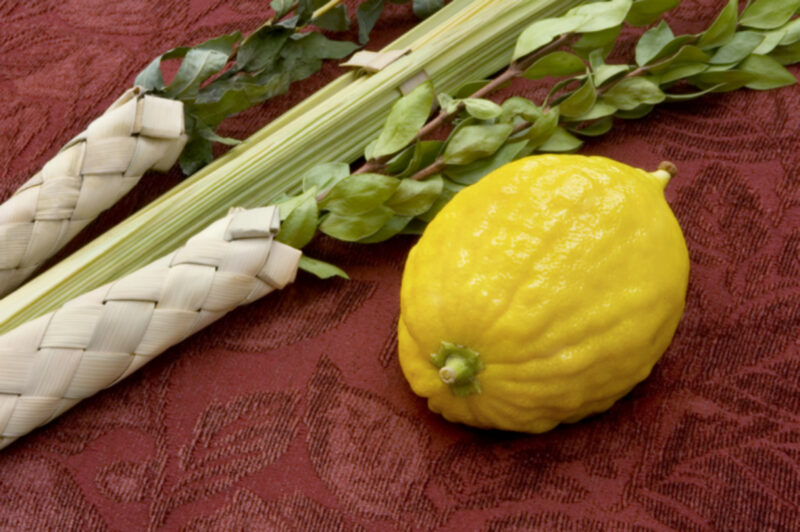FILTER
IMPACT BLOG
Email: customerservice@jnf.org
Oct 10, 2022 By Yossi Kahana Category: Education,
The Festival of Sukkot

What is Sukkot?
The festival of Sukkot is celebrated by dwelling in the sukkah, taking the Four Kinds, and rejoicing— and is followed by Simchat Torah.
Sukkot—when we expose ourselves to the elements in greenery-covered huts—commemorates G-d sheltering our ancestors as they traveled from Egypt to the Promised Land. The Four Kinds express our unity and our belief in G-d’s omnipresence. Coming after the solemn High Holidays, it is a time of joy and happiness.
The Four Kinds of Sukkot
We take the “four kinds” and make a blessing together. What are the four kinds? A palm branch (lulav), two willows (aravot), a minimum of three myrtles (hadassim) and one citron (etrog), and the aravot (willows).
Jewish unity is one of the central themes of Sukkot. The four kinds you are holding symbolize four types of Jews, with differing levels of Torah knowledge and observance for the Sukkot meaning. The commandment of the Four Species is to bind them as one unit to create a whole that is much greater than the sum of its parts. So too in our society, it is not enough to accept the differences among people, we must include them as equal contributors in our communities. Indeed, as part of its focus on improving the quality of life in Israel, Jewish National Fund-USA is dedicated to ensuring that no member of Israeli society is left behind. Through a variety of initiatives, JNF provides cutting-edge rehabilitative services, special education, and medical care for people with special needs and makes its parks, nature trails, and recreational facilities inclusive for visitors of all ability levels.
Following Sukkot with Simcha Torah
Immediately following the seven-day festival of Sukkot come the festivals of Shemini Atzeret and Simchat Torah. In Israel, the festivals are “compacted” into a single day. This holiday is characterized by an utter joy, which surpasses even the joy of Sukkot.
The Midrash explains that this is analogous to a king who invited his sons to a feast for several days. When the time came for them to leave, he said: “My sons! Please, stay one more day; it is difficult for me to part with you!” The joy reaches its climax on Simchat Torah, when we celebrate the conclusion—and the restarting—of the annual Torah-reading cycle. The holiday is marked with unbridled rejoicing, especially during the "hakafot" procession. We march, sing, and dance with the Torah scrolls. "On Simchat Torah," goes the Chassidic adage, "we rejoice in the Torah, and the Torah rejoices in us; the Torah, too, wants to dance, so we become the Torah's dancing feet." Chassidic teachings explain the verse (Isaiah 55:12), “For in joy shall you go out and in peace shall you arrive,” to mean that through joy one can leave all difficulties and reach peace and completion.
Every week we have read, studied, and were inspired by its timeless teachings. So, as the Torah reading cycle comes to an end, may we take the joy of “the time of our rejoicing” and infuse it into the new year and start reading the Torah all over again, sharing new lessons, insights, and inspiration.
The Jewish Mission with Jewish National Fund-USA
Just as Israel combines these festivals into a single holiday, so Jewish National Fund-USA combines its many missions under its single vision. All the work that Jewish National Fund-USA does is in line with fulfilling the vision of a stronger, more secure Israel. Jewish National Fund-USA works each and every day to create a place that people can call home for generations to come, where they can thrive, feel joy, and celebrate life.
May the week-long message of the Four Species escort us throughout the year.
To donate to Jewish National Fund-USA in honor of Sukkot or Simchat Torah, visit jnf.org/donate
